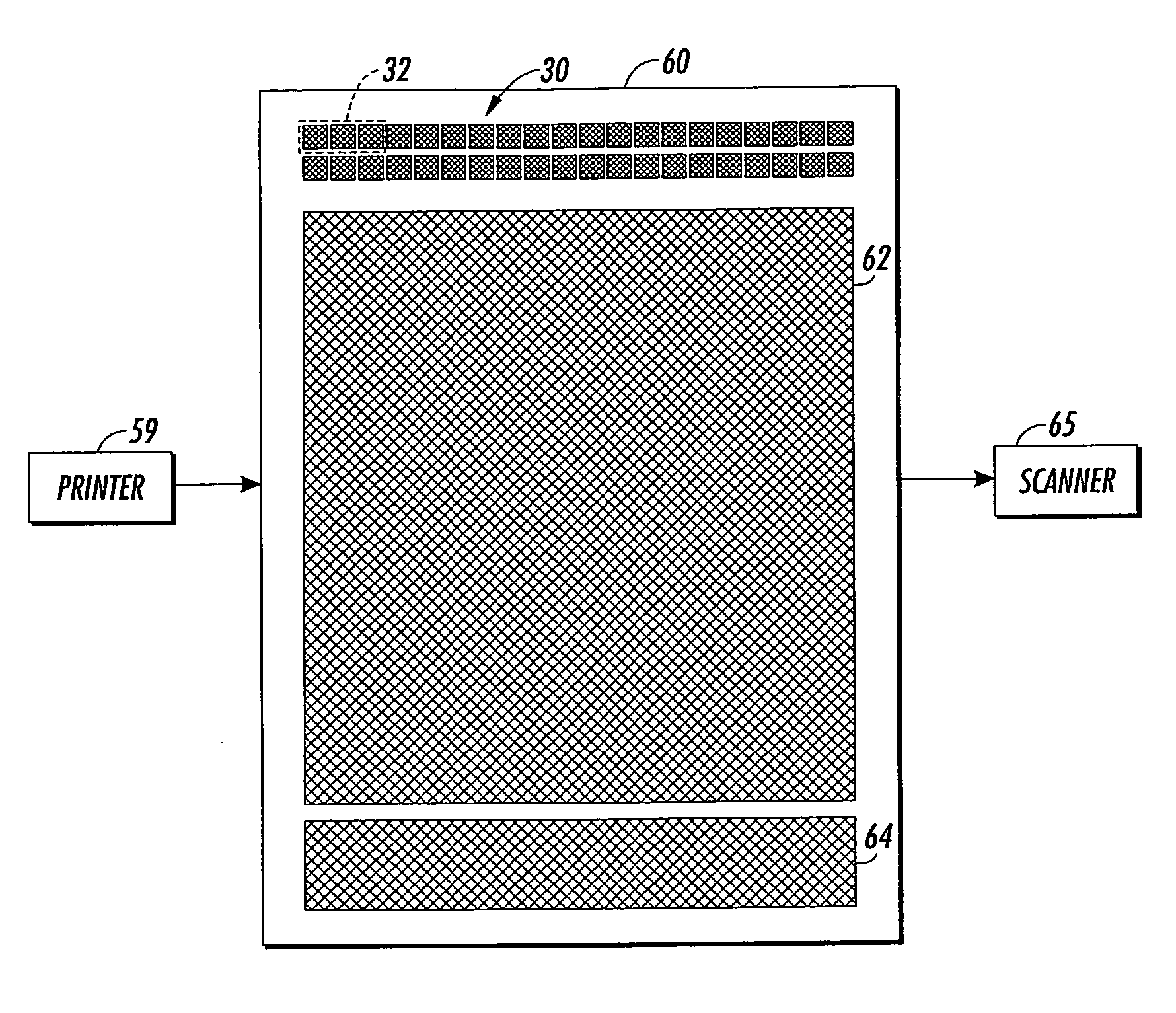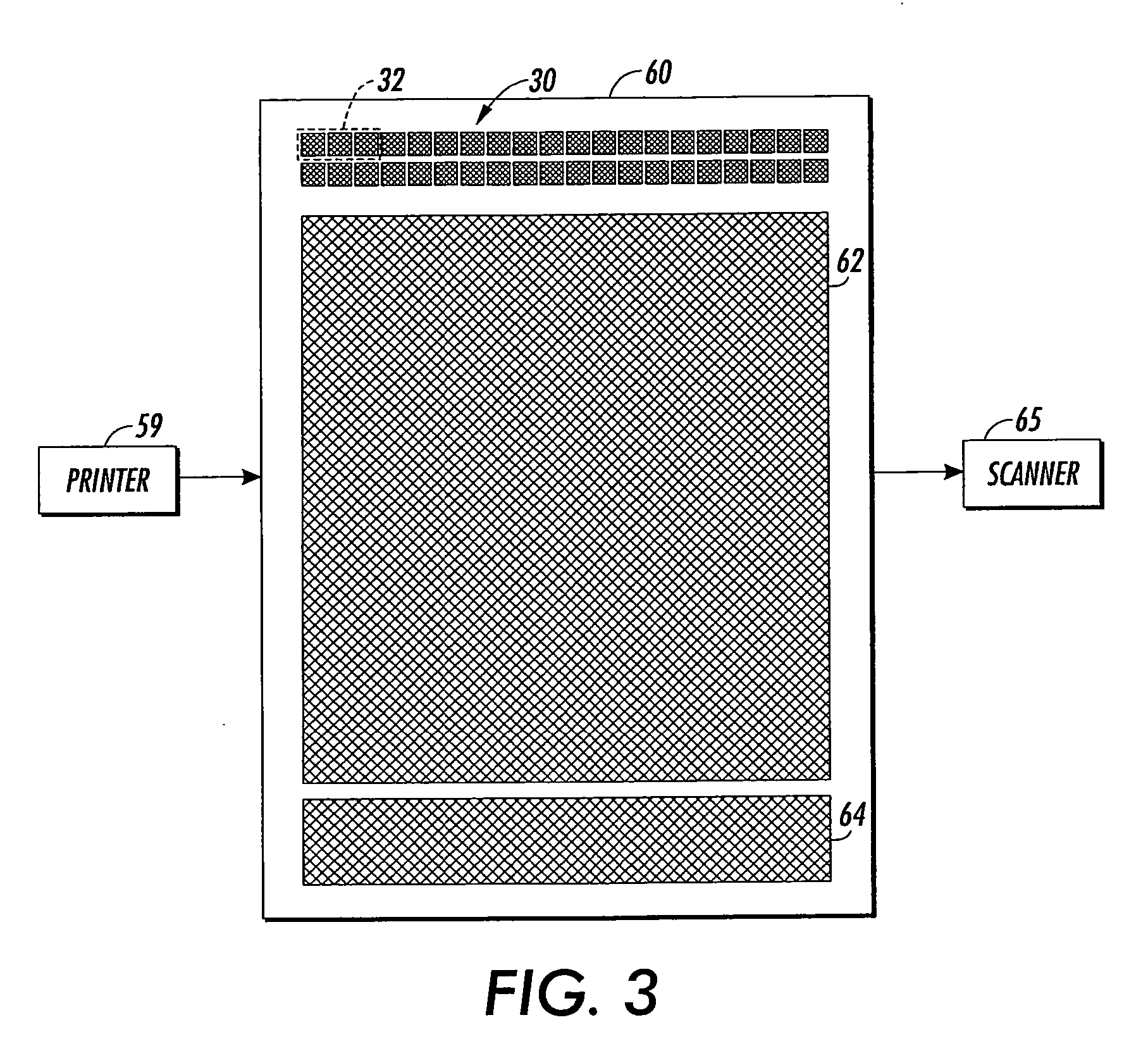Patch codes for color calibration job identification encoding
a color calibration and job technology, applied in the field of patch codes for color calibration job identification encoding, can solve the problems of high accuracy of calibration, page misordering, and possibility of error, and achieve the effects of reducing the potential for errors, increasing the robustness of the system, and enhancing the scanning par
- Summary
- Abstract
- Description
- Claims
- Application Information
AI Technical Summary
Benefits of technology
Problems solved by technology
Method used
Image
Examples
Embodiment Construction
[0012] There are many techniques for encoding information onto a printed page, glyphs, Cauzin strips and bar codes for example. However, these are typically read by scanners designed to handle a specific type of data. Glyphs require two-dimensional platen scanning. Cauzin strips require the Cauzin strip reader or two-dimensional platen scanning with appropriate software. Handheld laser scanners are typically used to read bar codes. For color calibration applications, in order to maximize robustness, it is desirable to minimize the number of times a human operator has to manipulate printed pages. It is therefore preferable to have a scanner that scans for spectrophotometric values (calibration data) also scan for job identification information. A spectrophotometric scanner typically used for calibration moves to a particular coordinate and then commences scanning for color values. One such scanner may a Gretag spectrophotometer (from Gretag Imaging Inc.). Use of a scanner of this typ...
PUM
| Property | Measurement | Unit |
|---|---|---|
| legal size | aaaaa | aaaaa |
| width | aaaaa | aaaaa |
| color | aaaaa | aaaaa |
Abstract
Description
Claims
Application Information
 Login to View More
Login to View More - R&D
- Intellectual Property
- Life Sciences
- Materials
- Tech Scout
- Unparalleled Data Quality
- Higher Quality Content
- 60% Fewer Hallucinations
Browse by: Latest US Patents, China's latest patents, Technical Efficacy Thesaurus, Application Domain, Technology Topic, Popular Technical Reports.
© 2025 PatSnap. All rights reserved.Legal|Privacy policy|Modern Slavery Act Transparency Statement|Sitemap|About US| Contact US: help@patsnap.com



